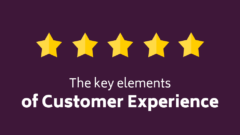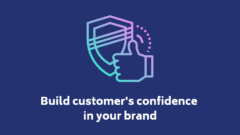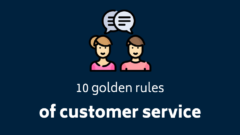The well-designed visual identity of your online business is key to success nowadays. However, for a beginning entrepreneur with a tight budget, hiring a professional graphic design studio to create a visual identity from the ground up might be too much. If you’re not sure whether your business will work out, then investing all your savings in a creative agency wouldn’t be a wise move. Don’t worry. It is possible to create a visual identity without blowing your budget. You just need to come up with a good plan first.
Where to find freelance graphic designers?
If you know the ropes about graphic design software but are not experienced in designing per se, then visit Envato Market. It’s a place where you can find an abundance of pre-made themes, logos, and templates submitted by freelance creators. Just buy a template you like, customize it by changing colours or pictures and implement it in your store.
However, if you’re not fluent in graphics software, then outsourcing it all is the most cost-effective option for you. Two of the most popular platforms for freelancers are Fiverr and 99designs. Both allow you to check out portfolios of various designers. Choose a freelancer who is experienced in designing for your niche. On 99designs you can even create a contest and allow freelancers to pitch design ideas based on your brief. This option works best if you don’t have a clear vision in mind yet. Whether you already know what your store should look like or not, read our tips on how to clarify your idea.
Coherence of your visual identity
Visual identity is a system of tightly interlinked elements. If one thing is off, then the whole system performs poorly. Not only should every element be well-designed, but all the components must fit together.
It’s hard to maintain coherence when you employ a few different freelancers, which is often the most economical option. If that’s the case, express your expectations clearly while discussing your commissions with creators. Most importantly, prepare your strategy beforehand.
The elements of your visual identity
As an online store owner, you’re in luck – your visual identity is fully digital. There’s no need for interior decorations, uniforms of employees or printed materials. Digital components of visual identity are relatively easy to create, implement, and change.
Color palette
Choose no more than 5 colours that will be characteristic of your brand. Your color palette should be composed of hues that correspond with each other and convey the core values of your brand.
How to pick a good color palette? Use this simple online tool that generates 5 random colors. Just copy the HEX or RGB numbers of selected colors and send them to a graphic designer so he or she can incorporate them in your logo or website.
Logo
It’s a unique symbol of your business that will appear on all the materials associated with your store. It’s a representation of the values and culture of your company. Express what you stand for.
Remember that logo doesn’t have to depict your product or business field. Use a symbol or an abstract idea in your logo to give it a timeless and universal look.
Make it memorable. Repetitive exposure to logo builds familiarity with the brand, to the point when a client can identify your business without reading a word. Don’t use stock images or clichés. The best way to make your logo memorable is to choose a creative and striking design.
Remember to take scaling into consideration. A logo must be visually readable at all sizes. Avoid overly complicated designs, and always demand a vector file from a designer.
If you want your logo to be based on a font, pick a readable one. Ideally, you’d want a typeface designed exclusively for your business. It’s a big investment usually undertaken by large corporations. While using one of the open source fonts, add something characteristic to it.
Website layout
The layout and style say a lot about your store. Most of the people will evaluate trustworthiness based on the website appearance alone. It means that an amateurish website can cost you a lost sale.
After designing or commissioning the design of a logo, it’s time to build a website that heavily relies on trends. Why? Because you must strive to make your storefront as user-friendly as possible, and users take kindly to what they know. When it comes to user experience, there’s little room for experiments.
Find a minimalistic website template that is widely used, and customise it to your liking. Rearrange sections, change the colors and fonts, put the logo in strategic places, add pictures of your products, and fill it all up with a well-written copy. After you finish, no one will be able to tell whether you started from a pre-made template.
Remember that more and more people use mobile devices to browse the internet. Before you pick your template, check its responsiveness to find out if it displays correctly on all types of devices.
Typography
Every website needs one or two easy-to-read fonts that will be consequently used in every text. Choose typefaces that correspond to the logo, layout and company values.
We highly recommend Google Fonts, since they’re free to use commercially. Use the Font Pair tool to match up and test typefaces from Google.
Whatever you do, remain consistent
If you own a company that has more than 5 employees, make sure that they all stay on the same page, and their vision of your brand is aligned with yours. Visual identity can be diluted by unnecessary additions or misuses. Prepare a simple brand manual (or have it prepared by a professional) – a set of guidelines on how to communicate your brand’s message. Distribute it in all the departments of your business.
Brand identity is built over time and therefore cannot be changed every few months. Every interaction with your brand should evoke the same set of emotions in a client. Coherence in visual communication is key if you want your brand’s message to sink in. Keep the color scheme, typography, and logo design consistent across all possible touch points including website, landing pages, advertisements, mailings, social media, etc.
If you’re at the beginning stage of building your online store, use our complete eCommerce checklist. Thanks to it, you won’t miss anything important in the process of starting your business.
About the author

- Elliot
- Content specialist and gaming enthusiast. Trained to be a philosopher. Interested in Deep Learning, scalability and startups.






